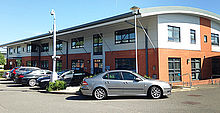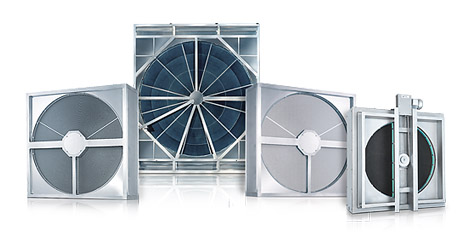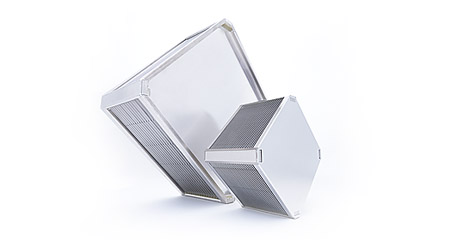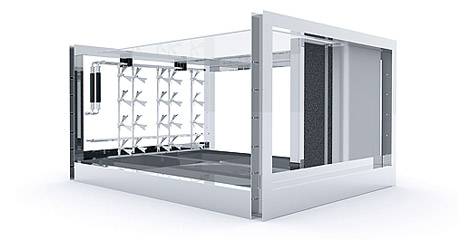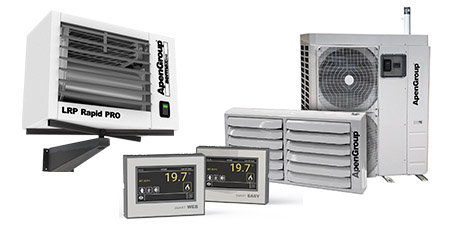
Generally, more energy is required to cool a room using air-conditioners than is consumed to heat it with radiators. This is an important issue for warm regions of the world - but also for hot days in temperate zones.
Evaporative Cooling
There is, however, a way of drastically reducing the energy required. In most cases this makes it possible to dispense with air-conditioners altogether. This is done thanks to a simple physical phenomenon - the evaporation of water.
The principle is: when water evaporates, it draws sensible heat (the heat we can feel) from the surrounding air. Result: the air temperature drops and the room air becomes cooler. This is known in the ventilation and air-conditioning industry as adiabatic cooling.
All that is needed, then, to add water to the system, which then evaporates and causes the air to cool. For this reason the process is also sometimes simply called evaporative cooling.
Direct und Indirect
A distinction is made between direct and indirect evaporative cooling.
In direct adiabatic cooling, moisture is simply added to the air entering from outside. This cools the supply air while also significantly increasing its humidity - which is not always desirable.
In most cases, therefore, indirect adiabatic cooling is preferred. This process is explained by our example involving the Klingenburg CERTO humidifier and rotary heat exchanger.
In this example the objective is to cool the room air with minimal energy or cost input. The outside temperature is 35°C and the exhaust air leaves the room at 25°C.
The CERTO is used to humidify the exhaust air from the room. The water evaporation involved in this process also removes heat from the exhaust air, i.e. the air is cooled.
In the next step this cooled air traverses the rotary heat exchanger, which captures the cooling energy.
The rotor, cooled on the exhaust air side, now rotates into the incoming airstream, where it cools the warm air entering from outside. This cooled supply air now passes into the room. No air-conditioner is required.
The Mollier h-x Diagram
The changes in air temperature and humidity can be illustrated using a Mollier h-x diagram. This gives a clear representation of the changes of state of humid air.
The air temperature in °C is indicated on the left-hand scale while relative humidity in % is shown on the right-hand scale.
In our example the (exhaust) air leaves the room at 25°C and with 50% relative humidity. This air is fed through the humidifier, where it cools by 18°C but its relative humidity increases to 98%, i.e. approaches saturation.
This change is indicated on the diagram by the blue line.
The rotary heat exchanger stores the majority of the cooling energy captured and feeds this to the supply airstream. This allows the incoming air to be cooled from 35 to 23°C and at the same time to capture some of the humidity of the exhaust air, reaching the comfortable level of 61%.
The room cooling has thus been achieved in full - with no energy-intensive air-conditioning required.


